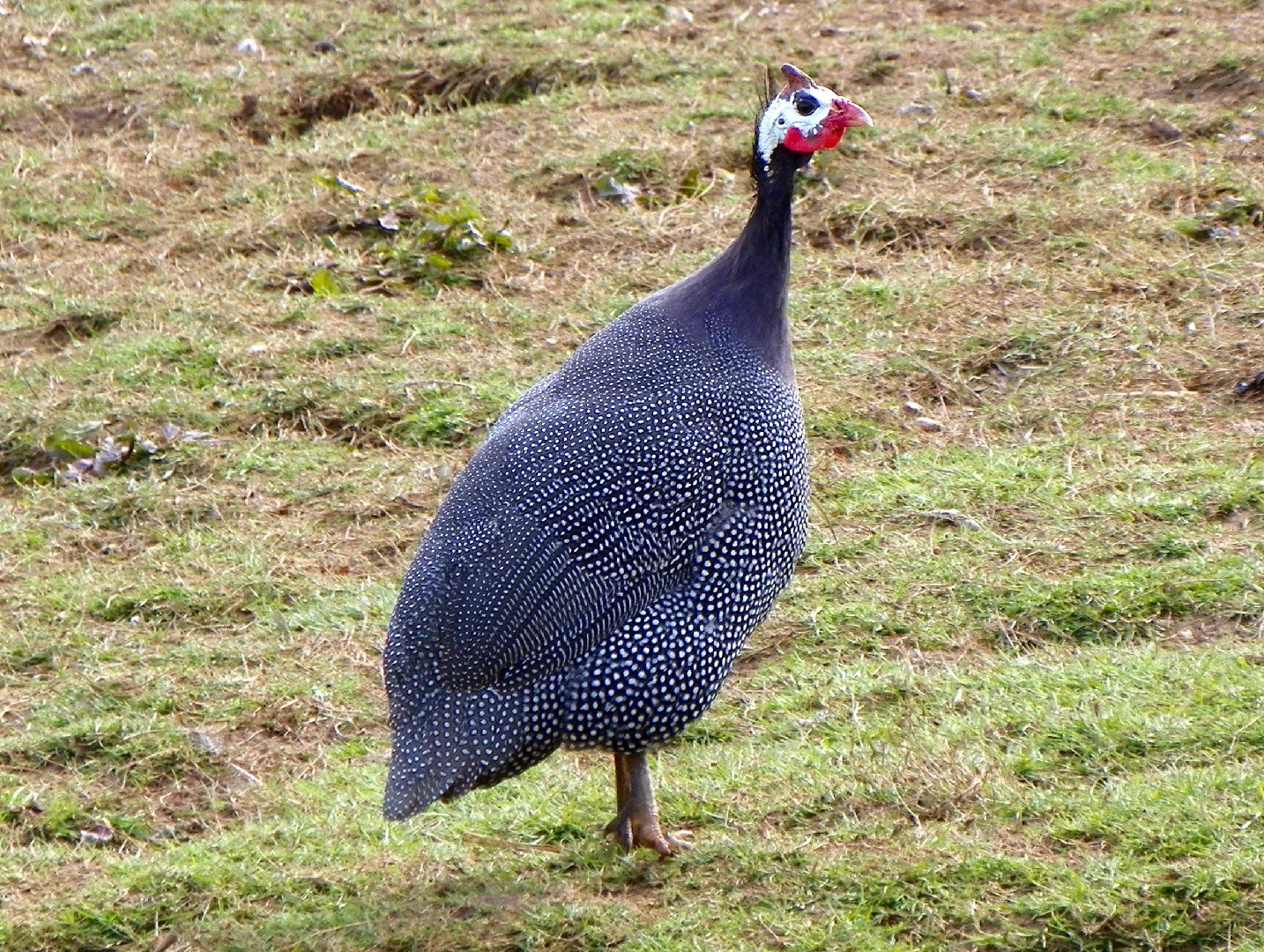Helmeted Guineafowl
A species of Guineafowl, Also known as Tufted Guineafowl, Assorted Guinea Package, Buff Guineas, Lavender Guineas, Porcelain Guineas, Slate Guineas Scientific name : Numida meleagris Genus : Guineafowl
Helmeted Guineafowl, A species of Guineafowl
Also known as:
Tufted Guineafowl, Assorted Guinea Package, Buff Guineas, Lavender Guineas, Porcelain Guineas, Slate Guineas
Botanical name: Numida meleagris
Genus: Guineafowl
Content
Description People often ask General Info
 Photo By Peter O'Connor aka anemoneprojectors , used under CC-BY-SA-2.0 /Cropped and compressed from original
Photo By Peter O'Connor aka anemoneprojectors , used under CC-BY-SA-2.0 /Cropped and compressed from original Description
Helmeted Guineafowls are large birds with featherless blue heads. They are native to open habitats in Africa, but in the U.S. they're kept in parks, farms, and backyards to combat and control ticks that are known to spread Lyme disease. In an effort to intimidate, the males will bristle their feathers, raise their wings, and run at their opponents while squawking and gaping at the beak. They are neither subtle in their behavior nor subtle in their looks.
Size
53 - 58 cm
Life Expectancy
12-15 years
Nest Placement
Ground
Feeding Habits
Helmeted Guineafowl forages for food, consuming an omnivorous diet including seeds, fruits, vegetables, and small animals like snails, worms, and insects. With keen foraging skills, helmeted Guineafowl adapts to diverse food availability.
Habitat
Helmeted Guineafowl predominantly reside in warm, semi-arid environments such as savannas, open woodlands, and farmlands. Their preferred habitats feature a blend of natural and cultivated areas like forest edges and thorn scrubs. These birds adapt well from sea level to altitudes above 3000 meters and often gather in large flocks near water sources essential for drinking and roosting.
Dite type
Omnivorous
People often ask
General Info
Feeding Habits
Bird food type
Behavior
This is a gregarious species, forming flocks outside the breeding season typically of about 25 birds that also roost communally. Guineafowl are particularly well-suited to consuming massive quantities of ticks, which might otherwise spread lyme disease. These birds are terrestrial, and prone to run rather than fly when alarmed. Like most gallinaceous birds, they have a short-lived explosive flight and rely on gliding to cover extended distances. 

 Photo By Peter O'Connor aka anemoneprojectors , used under CC-BY-SA-2.0 /Cropped and compressed from original
Photo By Peter O'Connor aka anemoneprojectors , used under CC-BY-SA-2.0 /Cropped and compressed from original